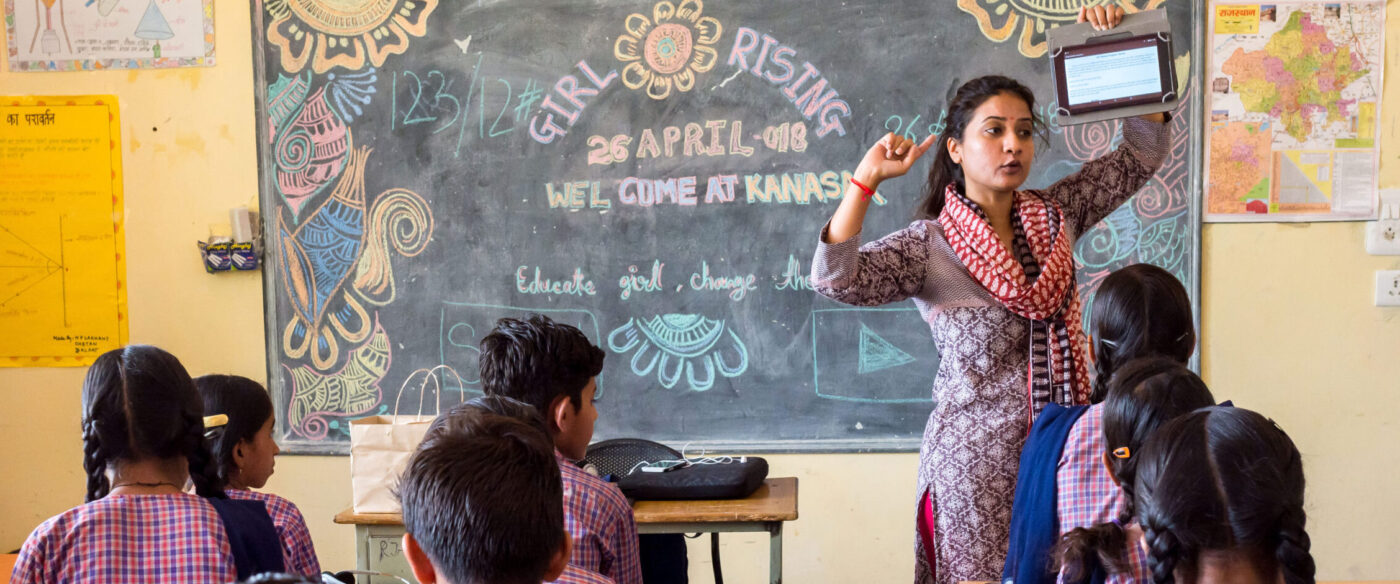Girl Rising Gender-Sensitization Program

Pilot Evaluation of the Girl Rising Gender-Sensitization Program in Punjab and Rajasthan, India
 Despite the gains that India has made over the past 20 years, it remains a country with extreme gender inequalities. Gender sensitization and empowerment programs aimed at adolescents, during the time they are forming gender attitudes, have the potential to diminish gender inequity.
Despite the gains that India has made over the past 20 years, it remains a country with extreme gender inequalities. Gender sensitization and empowerment programs aimed at adolescents, during the time they are forming gender attitudes, have the potential to diminish gender inequity.
The Girl Rising (GR) Gender-Sensitization Program (GR Program) is a comprehensive 24-session curriculum built around the Girl Rising film. The GR Program leverages powerful storytelling tools to empower adolescents to identify and challenge their gender-related experiences, understand the negative effects of existing gender norms and biases, build agency, and take action to promote gender parity in their own lives and in their communities. In India, GR partnered with Bharti Foundation’s Satya Bharti Schools to implement the GR Program between August 2017 to April 2018.
Pilot Evaluation of the Girl Rising Gender-Sensitization Program in India
 India is one of the most challenging countries to be a girl or woman. It ranks 125 on the gender inequality index out of 159 countries, a reflection of the gender-based discrimination that girls and women face throughout their life course – as evidenced with disparities in secondary education, employment, health, violence, and safety.
India is one of the most challenging countries to be a girl or woman. It ranks 125 on the gender inequality index out of 159 countries, a reflection of the gender-based discrimination that girls and women face throughout their life course – as evidenced with disparities in secondary education, employment, health, violence, and safety.
Across India, cities are growing, companies are expanding, and the middle class grows larger every day. Since the 1990’s, the economy has grown at one of the fastest rates to the seventh largest in the world. However, despite these gains, the country remains as one with vast gender inequalities.
India suffers from a skewed sex ratio (900 girls to 1000 boys). Only 32% of girls complete class 10; 52% of women report some type of abuse in their lifetime; girls and women disproportionately experience adverse health outcomes including malnutrition, maternal death, suicide, and gender-based violence; and there is a large gender gap in terms of employment in the labor force, as well as the types of work women are engaged in. Investing in girls and women will yield better health outcomes for children and families; greater economic prospects for families and communities; more stability and peace; and higher country-level GDP.
Construction of gender attitudes and perceptions of gender norms occurs during adolescence (ages 10–19 years). During this period, boys and girls engage with and construct their gender-based understanding of what it means to be a boy or a girl. During early adolescence, individual perceptions about gender norms begin to form and are still malleable, and therefore by addressing gender equality and bringing to the fore gender discrimination, adolescents have the potential to alter their short and long-term gender attitudes.
There has never been a more opportune time to advance the well-being of girls and women in India. Therefore, gender sensitization and empowerment programs aimed at young people, precisely at the time when they are forming their gender attitudes, has the potential to diminish gender inequity in the long-term.
